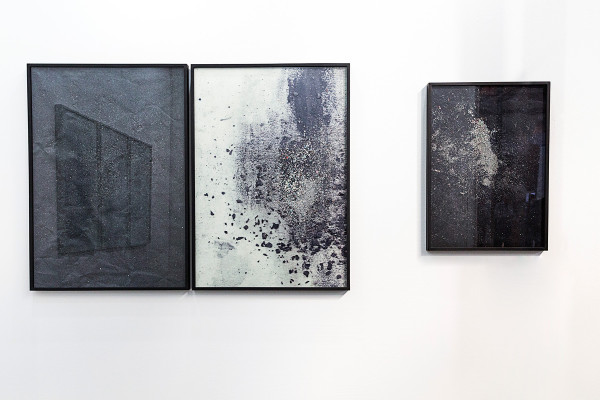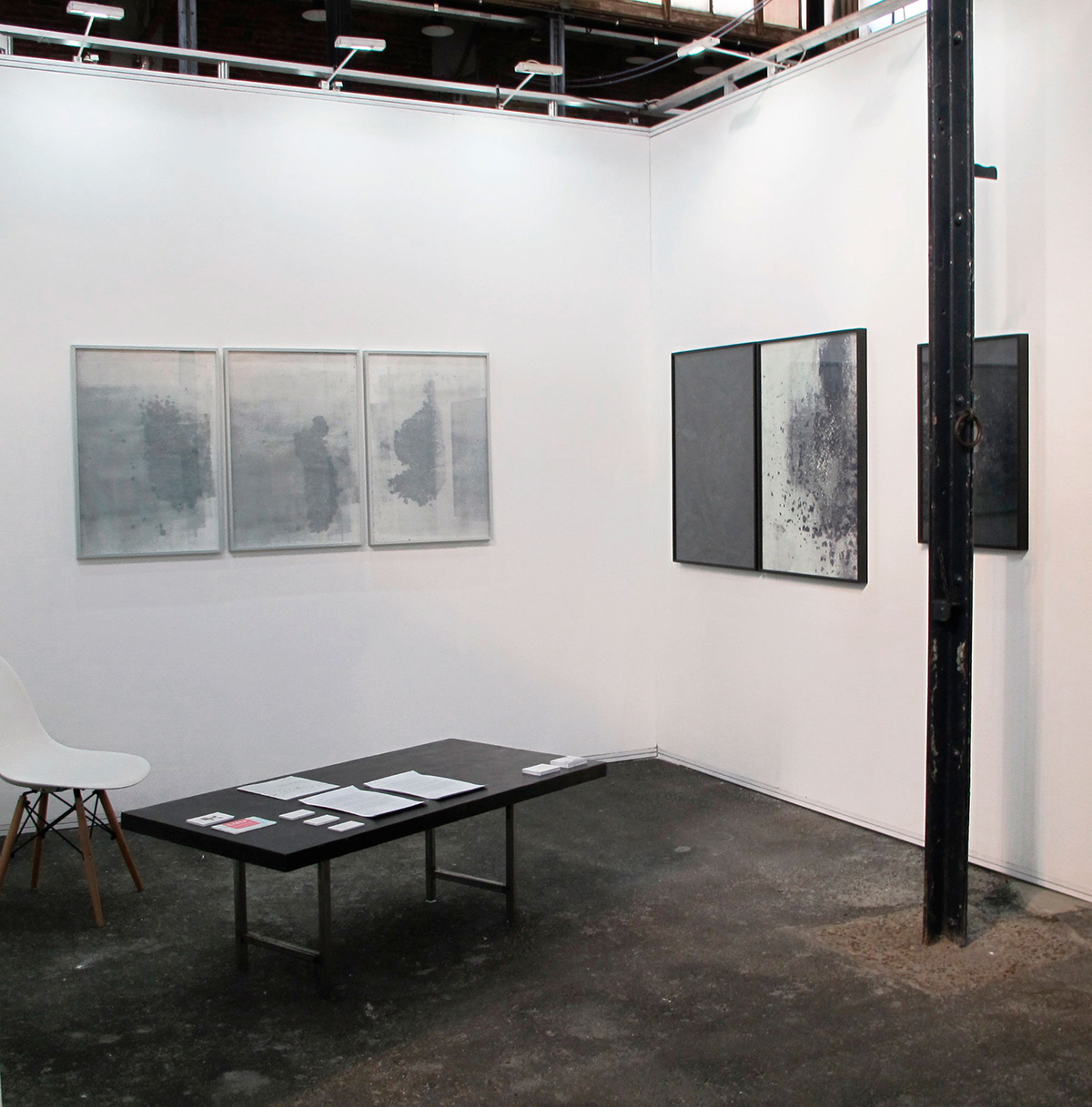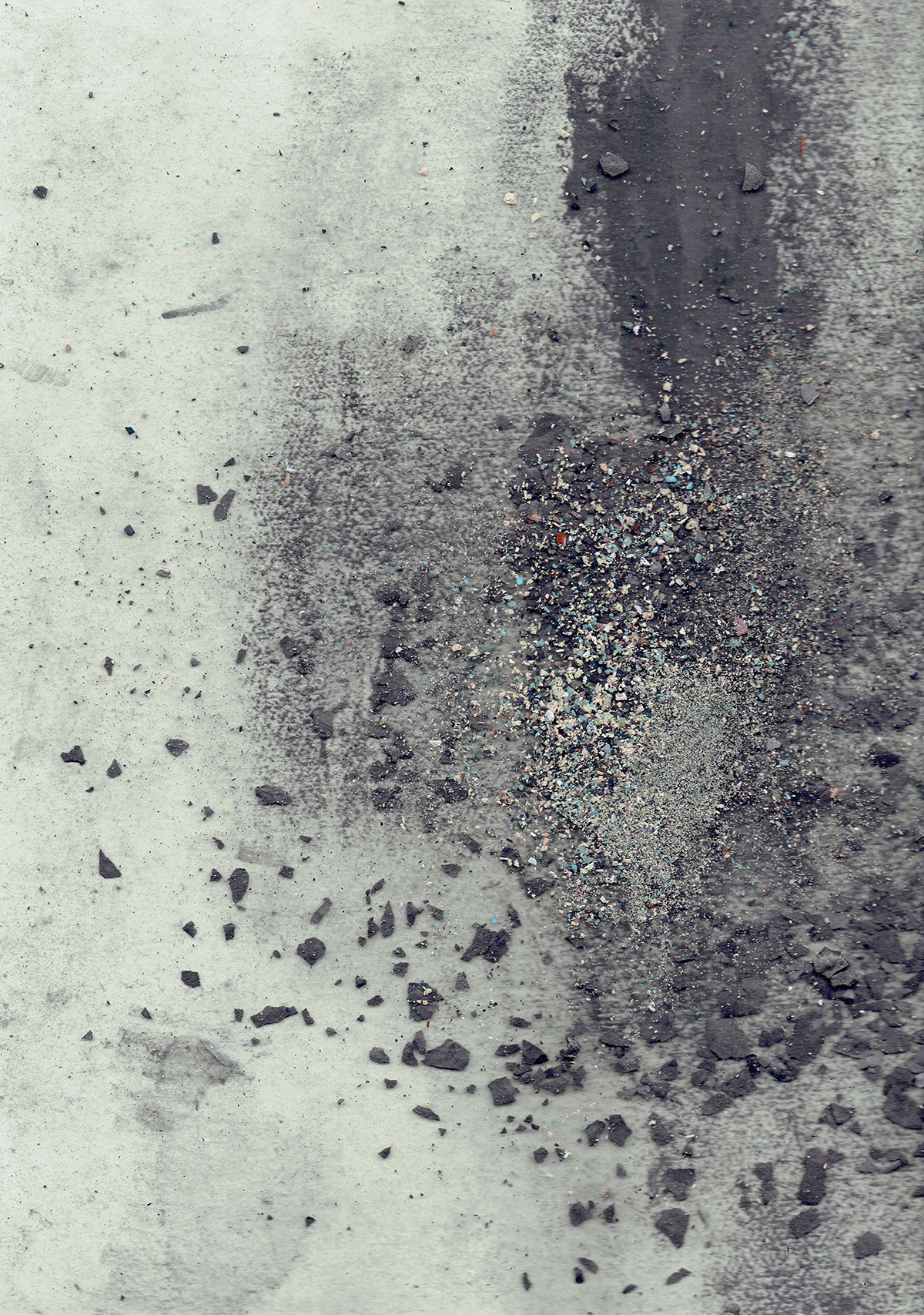





Solo project at BAphoto Fair
By
Elena Loson
Date
OCT 13 — OCT, 16 2016

My recent works are abstract exercises focused on the materiality of my work, its multiple transformations and the possibility of conforming an image. From the broad universe of drawing, and as part of my line of research, the materials I use -paper, colored pencils, powdered graphite, graphite masses, tracing paper- are observed throughout their transformation as material to become themselves the matter of.
The resulting universe of images is concentrated in a “pure” language in the objectual sense of the material occupied, as the graphite does not pretend to be anything other than graphite, and so on with the rest of the elements. However, the incorporation of certain languages coming from the photographic world changes the focus on these materials, expanding their symbolic meaning.
The starting point is a mass of graphite, a kind of plasticine that I manipulate into a ball and rub it on rice paper. A basic action that does not require any dexterity, a gesture similar to what one does when trying a new pencil. Once the paper is covered, I flatten the remaining dough with my fingertips (again an instinctive action), and let it dry until it flakes off. From this, I obtain on the one hand the sheet covered by the rubbing (and slightly curved by the action of the material) and the bits of graphite that come off. This “residue”, which is not really garbage, but material, is incorporated into my work table along with pencil powders, different sheets where I test strokes and techniques, papers that I use to stretch inks, etc.
The question I ask myself then has to do with the possibilities of these materials, how to recognize their identity. This is how I incorporate resources such as the scanner. For example, the level of detail of powders and papers obtained from the scanner elevates the “residue” to the foreground, also revealing a precision of textures and details that the eye could not notice with the naked eye, without technological mediation.
However, the combination of these elements (paper with trace evidence, colored pencil dust collected from the use of pencils in other works, solidified graphite dust, etc.) layered together form abstract but suggestive images, which could refer to misty landscapes, atmospheres or uncertain places. It is the very nature of the material that makes possible the appearance of these revealed, almost suspended images.
In a second stage and starting from the same initial procedure (rubbing a ball of graphite on rice paper, crushing what was left of that ball once I covered the whole sheet, letting the ball dry and then dropping broken pieces of dry graphite), I perform an almost tautological operation on another paper, also of low grammage. That is, with the same ball of graphite, I place the new sheet on top of the bits of powdered graphite, and register the trace of these “powders”, from bottom to top. The resulting stains determine the following action: with colored pencils, I make strokes in the blank spaces.
The “mists” that form are a sort of natural record of a previously invisible image. This exercise reminds me of those photographs in which, once developed, lights or shadows appear that had not been seen by the photographer. I think a bit about this when I make these works, about a universe of images that is contained in the same materials and in my desk, and that need a mechanism of image registration to “appear”. The trace that is unveiled from the rubbing is the landscape of my material universe.





